Introduction
A line may be defined as the locus of a point moving along a fixed path. A line consists of a number
of points; its projections are drawn by joining the projection of its extreme (end) points. Hence,
the projections of a straight line may be drawn by joining the respective projections of its ends,
which are points. In a conventional drawing, a line has only length but no thickness . Whereas in
computer aided engineering graphics the line has length and thickness.
The position of a straight line may have different orientations in space. As per first angle
projection, it may be parallel, perpendicular or inclined to either or both the Reference planes
(horizontal or vertical planes) as mentioned in the below classification.
Classification of Line Positions
A line may be placed in infinite number of positions with respect to the reference planes. These
positions may be classified according to the inclination of the line to reference planes and the
quadrants in which it is placed.
1. Line parallel to both the reference planes (HP & VP)
(a) Line away from both HP and VP.
(b) Line in HP and away from VP.
(c) Line in VP and above HP.
(d) Line on both HP and VP.
2. Line perpendicular to either of reference planes (HP or VP)
(a) Line perpendicular to HP and away from VP.
(b) Line perpendicular to HP and on VP.
(c) Line perpendicular to VP and above HP.
(d) Line perpendicular to VP and on HP.
3. Line inclined to HP and parallel to VP
(a) Line inclined to HP, parallel to VP and away from VP.
(b) Line inclined to HP, parallel to VP and in VP.
4. Line inclined to VP and parallel to HP
(a) Line inclined to VP, parallel to HP and away from HP.
(b) Line inclined to VP, parallel to HP and in HP.
5. Line inclined to both HP and VP
(a) One end of line in HP and the other end away from VP.
(b) One end of line in VP and the other end away from HP.
(c) One end above HP and the other end away from VP.
(d) One end away from VP and the other end above HP.
(e) One end in HP and VP and other end away from HP and VP.
(f) Both ends on HP and VP.
System of Notation
1. The actual line in space is denoted by capital letters A and B, or C and D etc.
2. The front view (FV) of a line is denoted by their corresponding lower letters with dashes as a’
and b’, c’ and d’ etc.
3. The top view (TV) of a line is denoted by their corresponding lower case letters without dashes
as a and b, c and d etc.
4. The side view (SV) of a line are denoted by their corresponding lower case letters with double
dashes as a” and b”, c” and d” etc.
5. Projectors are always drawn as continuous thin lines.
6. Line with specific thickness for a particular type of line.
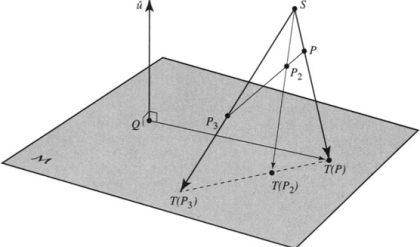
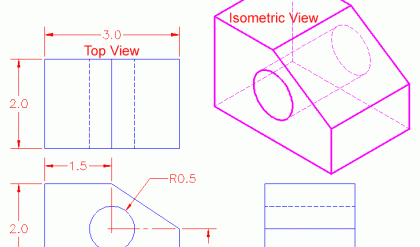
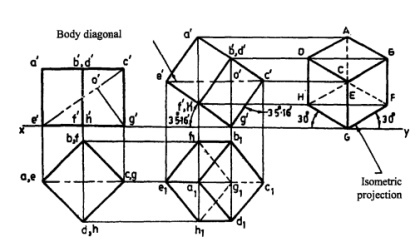
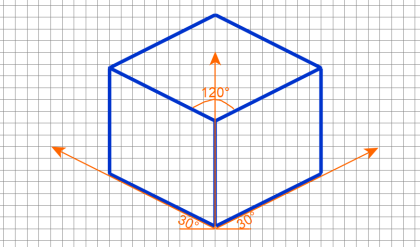
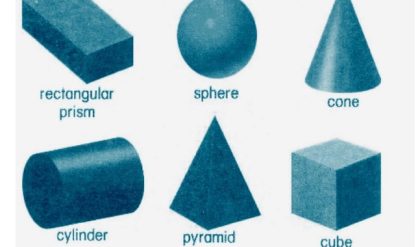
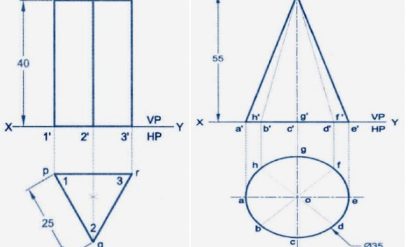
Comments are closed.